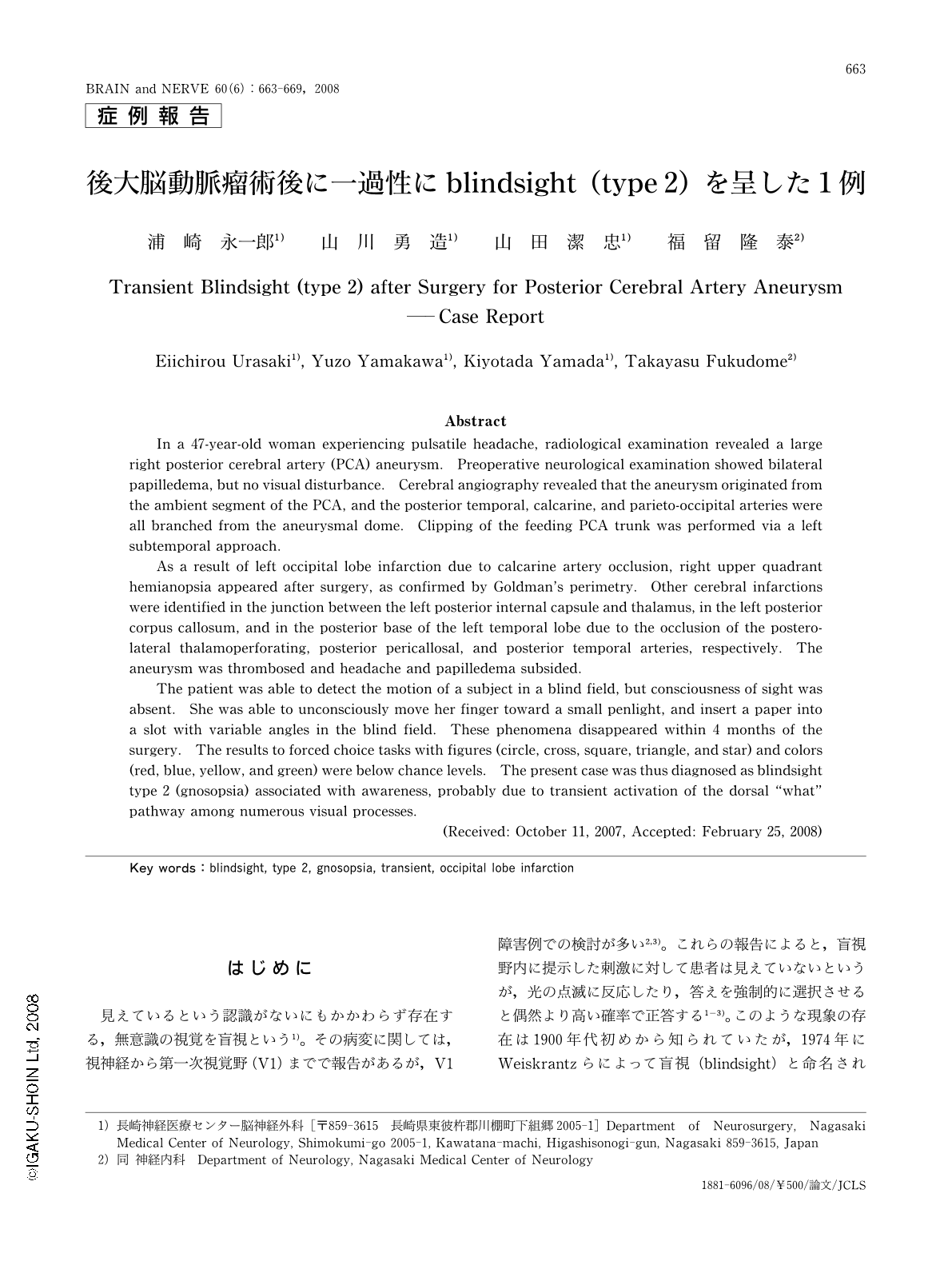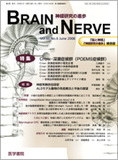Japanese
English
- 有料閲覧
- Abstract 文献概要
- 1ページ目 Look Inside
- 参考文献 Reference
はじめに
見えているという認識がないにもかかわらず存在する,無意識の視覚を盲視という1)。その病変に関しては,視神経から第一次視覚野(V1)までで報告があるが,V1障害例での検討が多い2,3)。これらの報告によると,盲視野内に提示した刺激に対して患者は見えていないというが,光の点滅に反応したり,答えを強制的に選択させると偶然より高い確率で正答する1-3)。このような現象の存在は1900年代初めから知られていたが,1974年にWeiskrantzらによって盲視(blindsight)と命名された1)。
今回われわれは,一側後大脳動脈閉塞による脳梗塞で盲視を呈した症例を経験したので若干の文献的考察を加えて報告する。
Abstract
In a 47-year-old woman experiencing pulsatile headache, radiological examination revealed a large right posterior cerebral artery (PCA) aneurysm. Preoperative neurological examination showed bilateral papilledema, but no visual disturbance. Cerebral angiography revealed that the aneurysm originated from the ambient segment of the PCA, and the posterior temporal, calcarine, and parieto-occipital arteries were all branched from the aneurysmal dome. Clipping of the feeding PCA trunk was performed via a left subtemporal approach.
As a result of left occipital lobe infarction due to calcarine artery occlusion, right upper quadrant hemianopsia appeared after surgery, as confirmed by Goldman's perimetry. Other cerebral infarctions were identified in the junction between the left posterior internal capsule and thalamus, in the left posterior corpus callosum, and in the posterior base of the left temporal lobe due to the occlusion of the postero-lateral thalamoperforating, posterior pericallosal, and posterior temporal arteries, respectively. The aneurysm was thrombosed and headache and papilledema subsided.
The patient was able to detect the motion of a subject in a blind field, but consciousness of sight was absent. She was able to unconsciously move her finger toward a small penlight, and insert a paper into a slot with variable angles in the blind field. These phenomena disappeared within 4 months of the surgery. The results to forced choice tasks with figures (circle, cross, square, triangle, and star) and colors (red, blue, yellow, and green) were below chance levels. The present case was thus diagnosed as blindsight type 2 (gnosopsia) associated with awareness, probably due to transient activation of the dorsal "what" pathway among numerous visual processes.

Copyright © 2008, Igaku-Shoin Ltd. All rights reserved.


